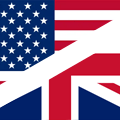ログインまたは登録してください
ライブウェビナーに参加したり、オンデマンドウェビナーを視聴したりするには、このWebサイトのメンバーとして登録する必要があります。すでにアカウントをお持ちの場合はログインしてください。お持ちでない場合は無料でアカウントを作成できます。
今すぐ登録 ログイン


 日本語
日本語
This study (my PhD research) followed 3329 children between ages of 7-9 years old that were referred to me for an orthodontic consultation by their general dentist. The purpose of the study was to see what combination of treatments would most reduce the impact of sleep disordered breathing, in the p
This study (my PhD research) followed 3329 children between ages of 7-9 years old that were referred to me for an orthodontic consultation by their general dentist. The purpose of the study was to see what combination of treatments would most reduce the impact of sleep disordered breathing, in the paediatric population.
Based on the signs and symptoms of sleep disordered breathing problems, 3326 patients had the standard orthodontic records of study casts, X-rays/CBCTs, extra oral and intra oral photographs, as well as a baseline sleep study (PSG) or an overnight pulse oximetry. Sleep studies revealed mild to moderate sleep aponea, or other symptoms of SDB. 21 patients PSG studies showed no SDB.
The patients were assigned to 1 of 4 treatment groups, plus a control group who did not receive any treatment (group 5): 1) ENT surgery only, or 2) ENT surgery and Myofunctional therapy, with a night time appliance (myobrace) (MFT) or 3) ENT surgery and orthopaedics/orthodontics, and 4) ENT surgery, orthopaedics/orthodontics, MFT and a night-time appliance (myobrace).
Sleep studies were performed for all patients, at baseline, and then after ENT intervention, after orthopaedic treatment, and finally after MFT. By comparing the results, the best outcome, for RDI reduction, was obtained when ENT surgery, myofunctional therapy and orthodontic therapy were used. Complete resolution of OSAs, in children, requires appropriate orthodontic treatment, such as maxillary development, maxillary protraction, and mandibular translation.
Learning outcomes:
1) Compare different combined treatment modalities for the treatment of paediatric OSAS
2) Include orthodontics in treatment plans for paediatric OSAS
3) Identify the relationship between malocclusions and SDB in children
4) Review the common ENT procedures that help restore nasal breathing in children
5) Summarize the most favourable dentofacial orthopaedic treatment outcomes for these children, once their nasal airway has been improved
6) Compare stability of their improved airway with and without MFT
 Tribune Group GmbH is an ADA CERP Recognized Provider.
Tribune Group GmbH is an ADA CERP Recognized Provider.
ADA CERP is a service of the American Dental Association to assist dental professionals in identifying quality providers of continuing dental education. ADA CERP does not approve or endorse individual courses or instructors, nor does it imply acceptance of credit hours by boards of dentistry. This continuing education activity has been planned and implemented in accordance with the standards of the ADA Continuing Education Recognition Program (ADA CERP) through joint efforts between Tribune Group GmbH and Dental Tribune International GmbH, recognized through ADA CERP from 5/1/24 - 6/30/27.



